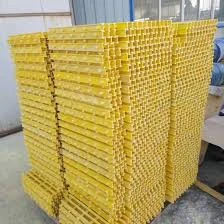
-
 Afrikaans
Afrikaans -
 Albanian
Albanian -
 Amharic
Amharic -
 Arabic
Arabic -
 Armenian
Armenian -
 Azerbaijani
Azerbaijani -
 Basque
Basque -
 Belarusian
Belarusian -
 Bengali
Bengali -
 Bosnian
Bosnian -
 Bulgarian
Bulgarian -
 Catalan
Catalan -
 Cebuano
Cebuano -
 China
China -
 China (Taiwan)
China (Taiwan) -
 Corsican
Corsican -
 Croatian
Croatian -
 Czech
Czech -
 Danish
Danish -
 Dutch
Dutch -
 English
English -
 Esperanto
Esperanto -
 Estonian
Estonian -
 Finnish
Finnish -
 French
French -
 Frisian
Frisian -
 Galician
Galician -
 Georgian
Georgian -
 German
German -
 Greek
Greek -
 Gujarati
Gujarati -
 Haitian Creole
Haitian Creole -
 hausa
hausa -
 hawaiian
hawaiian -
 Hebrew
Hebrew -
 Hindi
Hindi -
 Miao
Miao -
 Hungarian
Hungarian -
 Icelandic
Icelandic -
 igbo
igbo -
 Indonesian
Indonesian -
 irish
irish -
 Italian
Italian -
 Japanese
Japanese -
 Javanese
Javanese -
 Kannada
Kannada -
 kazakh
kazakh -
 Khmer
Khmer -
 Rwandese
Rwandese -
 Korean
Korean -
 Kurdish
Kurdish -
 Kyrgyz
Kyrgyz -
 Lao
Lao -
 Latin
Latin -
 Latvian
Latvian -
 Lithuanian
Lithuanian -
 Luxembourgish
Luxembourgish -
 Macedonian
Macedonian -
 Malgashi
Malgashi -
 Malay
Malay -
 Malayalam
Malayalam -
 Maltese
Maltese -
 Maori
Maori -
 Marathi
Marathi -
 Mongolian
Mongolian -
 Myanmar
Myanmar -
 Nepali
Nepali -
 Norwegian
Norwegian -
 Norwegian
Norwegian -
 Occitan
Occitan -
 Pashto
Pashto -
 Persian
Persian -
 Polish
Polish -
 Portuguese
Portuguese -
 Punjabi
Punjabi -
 Romanian
Romanian -
 Russian
Russian -
 Samoan
Samoan -
 Scottish Gaelic
Scottish Gaelic -
 Serbian
Serbian -
 Sesotho
Sesotho -
 Shona
Shona -
 Sindhi
Sindhi -
 Sinhala
Sinhala -
 Slovak
Slovak -
 Slovenian
Slovenian -
 Somali
Somali -
 Spanish
Spanish -
 Sundanese
Sundanese -
 Swahili
Swahili -
 Swedish
Swedish -
 Tagalog
Tagalog -
 Tajik
Tajik -
 Tamil
Tamil -
 Tatar
Tatar -
 Telugu
Telugu -
 Thai
Thai -
 Turkish
Turkish -
 Turkmen
Turkmen -
 Ukrainian
Ukrainian -
 Urdu
Urdu -
 Uighur
Uighur -
 Uzbek
Uzbek -
 Vietnamese
Vietnamese -
 Welsh
Welsh -
 Bantu
Bantu -
 Yiddish
Yiddish -
 Yoruba
Yoruba -
 Zulu
Zulu
Jan . 20, 2025 01:41
Back to list
fiberglass grid
In the realm of construction and civil engineering, fiberglass grid systems have emerged as revolutionary components that elevate infrastructure resilience and performance. Notably, as an industry professional with years of expertise, my experience reveals that fiberglass grid structures offer unparalleled benefits, establishing them as indispensable in various applications.
In industries where electromagnetic transparency is critical, fiberglass grids offer another layer of advantage. Unlike metal reinforcements, fiberglass does not interfere with radio wave frequencies or magnetic fields, making it ideal for structures requiring electromagnetic integrity, such as certain defense and medical facilities. The expertise surrounding the selection and implementation of fiberglass grids requires recognition of their mechanical properties and compatibility with varied environmental conditions. Professionals in the field can maximize the benefits of these grids by assessing the specific needs of a project, aligning them with the material attributes of fiberglass grids. Real-world applications have demonstrated that when properly selected and installed, fiberglass grids can outperform traditional materials in terms of longevity and reliability. Trustworthiness in adopting fiberglass grid systems also stems from comprehensive testing and compliance with rigorous industry standards. As these grids undergo extensive evaluation for stress resistance, UV stability, and fire retardancy, stakeholders in construction can trust that they are investing in a product with validated performance claims. In conclusion, fiberglass grid systems stand at the forefront of modern engineering solutions, offering unmatched durability, ease of installation, and environmental resilience. Their growing adoption across various sectors underscores their effectiveness and reliability as a top-tier construction material. The expanding body of professional experiences affirms their value, positioning fiberglass grids as a cornerstone in the development of future-proof infrastructure.


In industries where electromagnetic transparency is critical, fiberglass grids offer another layer of advantage. Unlike metal reinforcements, fiberglass does not interfere with radio wave frequencies or magnetic fields, making it ideal for structures requiring electromagnetic integrity, such as certain defense and medical facilities. The expertise surrounding the selection and implementation of fiberglass grids requires recognition of their mechanical properties and compatibility with varied environmental conditions. Professionals in the field can maximize the benefits of these grids by assessing the specific needs of a project, aligning them with the material attributes of fiberglass grids. Real-world applications have demonstrated that when properly selected and installed, fiberglass grids can outperform traditional materials in terms of longevity and reliability. Trustworthiness in adopting fiberglass grid systems also stems from comprehensive testing and compliance with rigorous industry standards. As these grids undergo extensive evaluation for stress resistance, UV stability, and fire retardancy, stakeholders in construction can trust that they are investing in a product with validated performance claims. In conclusion, fiberglass grid systems stand at the forefront of modern engineering solutions, offering unmatched durability, ease of installation, and environmental resilience. Their growing adoption across various sectors underscores their effectiveness and reliability as a top-tier construction material. The expanding body of professional experiences affirms their value, positioning fiberglass grids as a cornerstone in the development of future-proof infrastructure.
Next:
Related Products
Latest news
-
Exploring the Benefits of Top Hammer Drifter Rods for Enhanced Drilling PerformanceNewsJun.10,2025
-
High-Precision Fiberglass Winding Machine for GRP/FRP Pipe Production – Reliable & Efficient SolutionsNewsJun.10,2025
-
FRP Pipes & Fittings for Shipbuilding - Corrosion-Resistant & LightweightNewsJun.09,2025
-
Premium FRP Flooring Solutions Durable & Slip-ResistantNewsJun.09,2025
-
Premium Fiberglass Rectangular Tanks Durable & Lightweight SolutionNewsJun.09,2025
-
Tapered Drill String Design Guide Durable Performance & UsesNewsJun.09,2025









